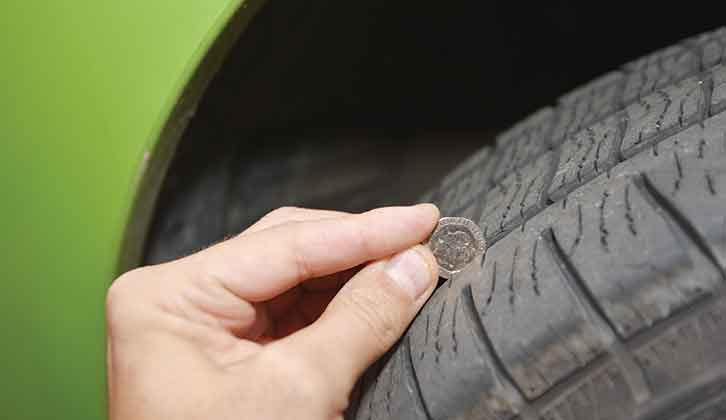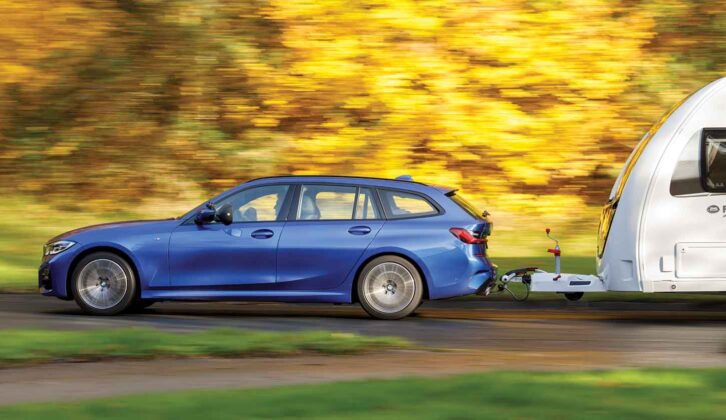Summer is naturally the peak of the caravanning season, but for many of us, autumn is actually the best time of year to go touring.
The cooler temperatures make for a better night’s sleep, the changing colours in the trees provide picturesque landscapes, and even the best caravan sites will be quieter.
Towing a caravan in the autumn is a different matter, though. The changing season brings its own challenges if you want to enjoy a safe and stress-free experience on the road, as we explain here.
1. Dealing with wet weather
Realistically, there’s a strong chance that you will be towing in the rain. November, on average, is one of the three wettest months of the year – unsurprisingly, October is another!
Wet roads mean longer stopping distances, so it’s a sensible precaution to double the distance to the car in front when you tow in the rain.
You also need to make sure that your windscreen is clear, cleaning off the last insect debris of summer before you make your first towing journey in the autumn.
It’s sensible to switch to ‘all-season’ screenwash, rather than continuing with a summer wash that may be too dilute to cope with autumn roads.
Carry out some caravan tyre safety checks to make sure they’re ready for autumn too. Make sure they are inflated to the right pressure for towing before you set off, and check there’s still enough tread. There must be at least 1.6mm of tread depth around the circumference of the tyre and across the central three-quarters of the tyre surface.

Is autumn too early to switch to winter tyres, if you plan to do so? The ideal time to switch to winter rubber will vary, depending on where you live, with an earlier switch making more sense in northern Scotland than southern England.
There’s a very strong case for running four-season tyres in the UK, rather than summer or winter tyres, as all-season rubber should work well over a wider variety of temperatures.
2. Towing in the wind
The other troublesome characteristic of the autumn is strong winds. The best caravan tow cars provide plenty of stability, so breezy days won’t cause much trouble if your car and caravan are well matched, properly maintained and driven with due care. Autumn gales, though, are a very different matter.
Keep an eye on the weather forecast in the days before your trip. If a gale is on the way, think about travelling a day early or late to miss the worst of the weather. That’s not always possible, but you can plan your route to avoid exposed stretches of road, especially high bridges. For example, if you’re heading to one of the best caravan parks in Wales, it may be prudent to travel on the A40, rather than crossing the Prince of Wales Bridge on the M4.
If you are taking a route that includes an exposed bridge, check before setting off that the bridge is still open and listen to the traffic reports on your journey.
When travelling on a windy day, if you can feel the caravan moving around and starting to pull at the back of the car, slow down. Even dropping from the caravan speed limit of 60mph to 55mph can make a difference to stability.
Towing in windy weather can be very tiring, so include plenty of breaks.
If the weather turns really apocalyptic, it might be better to postpone your trip. You’ll stay safe and will eventually enjoy the holiday far more, having waited for better weather.
3. Watch out for the low sun
Of course, it’s not going to be wet and windy throughout the whole of autumn (we hope). Some days, the weather can be quite glorious.
But even when the skies are clear, it pays to be careful. As we move into the autumn and winter months, the sun stays low in the sky, which can make it hard to see clearly. It’s just
as important to have a clean and clear windscreen on sunny days as when it’s raining, and it pays to keep your sunglasses in the car to reduce eyestrain. Use your sun visor when needed, too.
4. Be ready for the unexpected
Breakdowns, road closures and other long delays happen all year round, but it’s especially important to be prepared as temperatures drop and autumn edges towards winter.
On any long journey, whether towing or otherwise, take warm coats for you and all your passengers. Have snacks in the car in case you break down or are stuck in traffic for a long time. Take something for everyone to drink as well.
Keep a torch in the car. Yes, any smartphone will have a light, but a good quality torch will have a much brighter beam and will save running down your phone’s battery.
5. Keep your eyes peeled for wildlife
It’s not just the weather that can be challenging while you are towing in the autumn months. Wildlife can also pose a hazard.
For example, collisions between deer and vehicles peak during the autumn and early winter. Look out for the warning signs on the road, and if you see one, drive with extra caution. You’ll need to be particularly vigilant if you are on the road between sunset and midnight, and just after dawn.
If you see one deer, another could be right behind. A near-miss could be followed by a direct hit, so slow down and be ready to use your brake pedal.
Conclusion
At its best, autumn touring really is as good as caravanning gets. You’ll just need to be ready for tricky conditions on the roads. Following a few simple tips will help you be properly prepared for whatever the late-season weather might throw at you.
If you’re thinking of a winter tour too, be sure to take a look at our tips on towing a caravan in winter too.
If you’ve enjoyed reading this article, why not get the latest news, reviews and features delivered direct to your door or inbox every month. Take advantage of our brilliant Practical Caravan magazine SUBSCRIBERS’ OFFER and SIGN UP TO OUR NEWSLETTER for regular weekly updates on all things caravan related.









